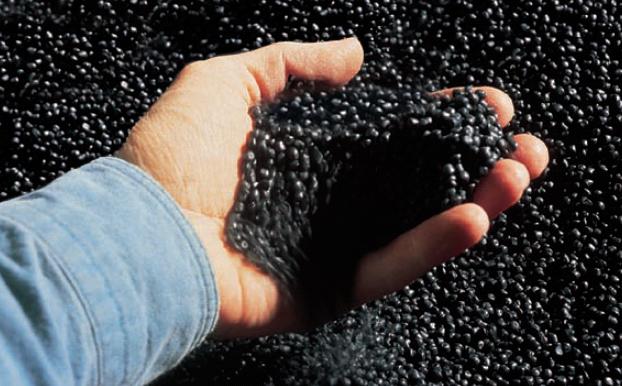 Image courtesy of Gopher Resource.
Image courtesy of Gopher Resource.We’ve all seen the depressing images of floating islands of plastic trash in our oceans. Now, the United Nations is making plastic recycling the focus of World Environment Day on June 5.
The event, sponsored by United Nations Environment Programme, is the UN’s most important day for encouraging worldwide awareness and action for the protection of our environment. Each year a theme is chosen to spotlight a particularly pressing environmental issue. “Beat Plastic Pollution” is the 2018 initiative to reduce our reliance on single-use and disposable plastic.
Lead Battery Plastic: 100 Percent Recyclable
In this regard, lead batteries are doing their part, with nearly 100 percent recyclability of their plastic components. In fact, lead battery recycling is one of the best examples of a circular economy as recognized by the World Economic Forum.
Here’s what the process looks like:
- When used lead batteries arrive at a battery recycling facility, the batteries are broken down, components are separated, and the plastic (polypropylene) pieces are washed, dried and sent to a plastic recycler.
- The recycler heats the plastic pieces until molten, then pelletizes the plastic into uniform sizes and sends the recycled plastic to manufacturers.
- Manufacturers use the pellets to create new battery cases, and the process begins again.
Not All Batteries Are Recycling Friendly
Most lead battery recycling occurs when the owner visits an auto shop to purchase a new battery and leaves the old one behind. It’s a pretty simple process with an economic incentive to participate. But other battery chemistries, such as lithium ion, used in everyday items like phones, iPads, power drills and more, require special handling to avoid creating a hazardous situation for consumers, waste facilities and recyclers.
California Launches Educational Effort
 In California, Call2Recyle, the leading consumer battery collection firm, commissioned a survey of waste facilities after hearing that battery fires were an issue. The survey revealed that batteries cause 65 percent of reported fires in California waste facilities. The largest source? Lithium ion batteries.
In California, Call2Recyle, the leading consumer battery collection firm, commissioned a survey of waste facilities after hearing that battery fires were an issue. The survey revealed that batteries cause 65 percent of reported fires in California waste facilities. The largest source? Lithium ion batteries.
That startling number resulted in “Avoid the spark,” a new initiative to educate consumers and waste facilities on how to properly recycle batteries. Carl Smith, CEO and president of Call2Recylce, Inc., said that 20 years ago, lithium-based batteries were almost nonexistent. Not so anymore. He said that Americans’ desire to go unplugged has changed the numbers.
“California is an excellent state to launch our Avoid the Spark education effort. In 2016 alone, 367 million lithium batteries were sold. Of those, 44.3 million were consumed in California. This growing trend reinforces the need to increase consumer education efforts on battery safety.”
Don’t Mix Lead and Lithium Batteries!
In part, because of their inherent value and recyclability, lead batteries are in a separate waste stream than other battery chemistries, making fires rare, except for when a lithium battery is improperly added to the lead battery recycling process. That can lead to a dangerous risk of fire or explosion, and legal issues. Comingling lithium batteries with lead batteries on pallets destined for secondary lead smelters is a violation of U.S. Department of Transportation regulations and other hazardous waste and universal waste regulations. A shipper of batteries violating these regulations faces fines and other heavy penalties.
Please Do Your Part
So on World Environment Day, be smart and help beat plastic pollution. Think twice before using a plastic bag, plastic straw, or choosing a beverage in plastic. And if you have spent batteries to dispose of, whether from your car, hover board or phone, be sure they end up in the right place.
Learn More
- Lead Batteries: Infinite Recycling and Beyond!
- Infographic: Sustainable Lead Battery Industry
- Essential Energy Everyday Loves Recycling
- Lead Battery National Recycling Rate Study
- Where to recycle batteries
- ABC7 video that shows battery fires in recycling centers


